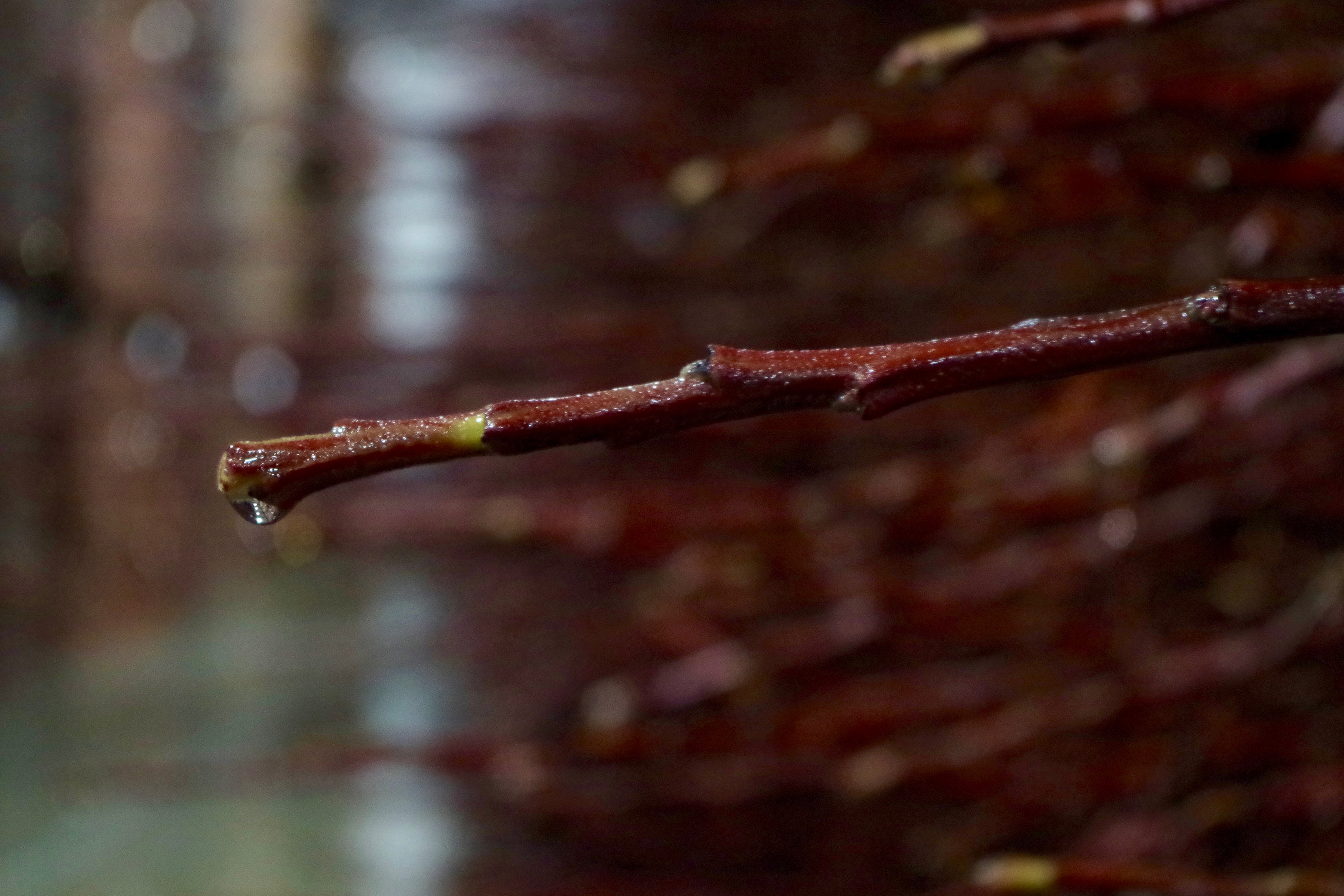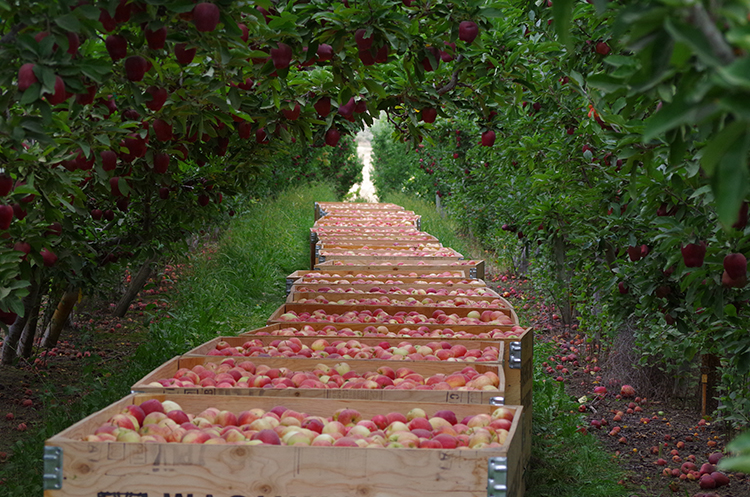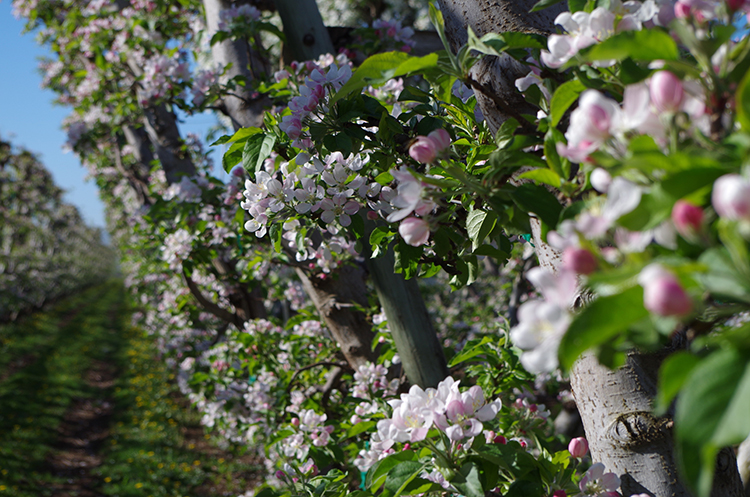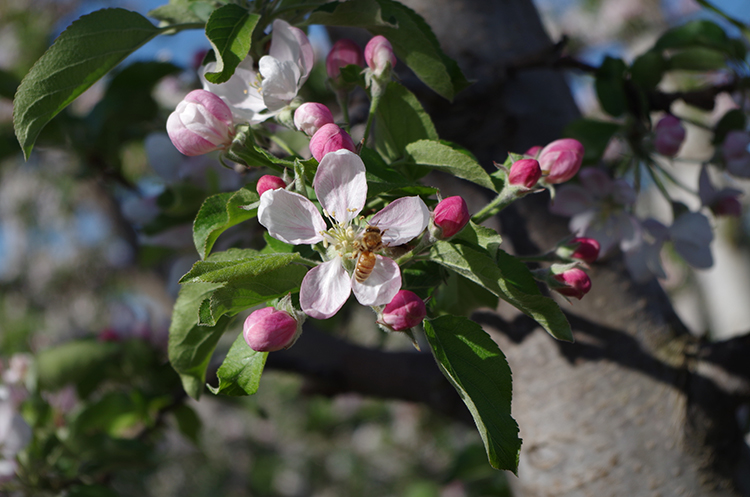We at rooted live smack-dab in the middle of apple country. When we say miles of orchard, it’s no boast. There are quite literally fruit trees in any direction from where ever you happen to find yourself here in the Yakima Valley. Depending on market trends and growing techniques, orchards are planted and replanted all the time. After seeing this go on for years on end, I suppose I had never taken the time to think about where these orchards came from with any detail or deep thought. How did those trees come to be?
This I do know. When putting in an orchard or swapping varieties, different apple cultivars are grafted onto rootstock, grown into a baby tree and purchased from nurseries and planted. I had just assumed this was to control aspects of growing. For example, if you can grow a smaller tree (because of the rootstock) but with the increased apple growth and quality of a specific variety (because of the graft), you can plant more trees in a smaller area and produce more apples. Makes sense from a farming point of view to maximize the yield. Agriculture is always looking to farm smarter. But again, what about the origin of the tree? If you take it back a level, there would have to be a seed in there somewhere, right? The answer is no and yes.
The no: Apples do not grow from seed. After perusing articles recently on heritage varieties and apple history, this simple fact was presented, and I was more than intrigued. What about all the Johnny Appleseed stories I heard as a child? Well, he wasn’t planting apples for your lunch box. You can certainly pop an apple seed in the ground and achieve tree growth, but it will not bear apples like the fruit the seed came from. It will more than likely produce something known as a “spitter,” so named for the action it inspires after taking a bite. Why? Because apples are not self-fertile. This means that a different variety is required to accomplish pollination. A Honeycrisp tree cannot pollinate another Honeycrisp tree. A different type of apple tree has to be nearby for the boom-chicka-wow-wow of fruit coitus to run its course. The resulting fruit will be a Honeycrisp apple, but the seeds in that apple will be a product of this cross pollination, and all the cross pollinations before it. If a seed of this union were to be planted, the resulting fruit could have characteristics that show up from anywhere in its lineage, colorful and sweet not being the most common gene line-up.
The yes: This doesn’t mean that the genetic lottery doesn’t hit triple 7s every now and then. Historically speaking, great eating apples were an accident. And these accidents were made prevalent in the apple eating world by grafting, so that a clone of that lottery winner could continue to produce more of these delicious apples in more places for more people. A couple of classic examples are the Granny Smith and the McIntosh. Maria Ann Smith (Granny herself) noticed this seedling growing near a creek on her Australian farm in 1868. Every Granny Smith tree today is a clone of that original tree. John McIntosh found a few wild apple trees while clearing the land on his Ontario farm in 1811, and one tree in particular bore sweet fruit that quickly became the family and neighborhood favorite. John planted seeds hoping for more of these sweet apples but could never get the same result. It wasn’t until his son learned about grafting over 20 years later that they were able to propagate the tree.
Today of course, we aren’t sitting around waiting for the next happy apple accident to occur. We don’t have to. Breeding programs are quite particularly targeted in their efforts to find new apple cultivars. But it is still nature, and it does take time to see if what will work on the drawing board will manifest in reality the way it’s hoped for.
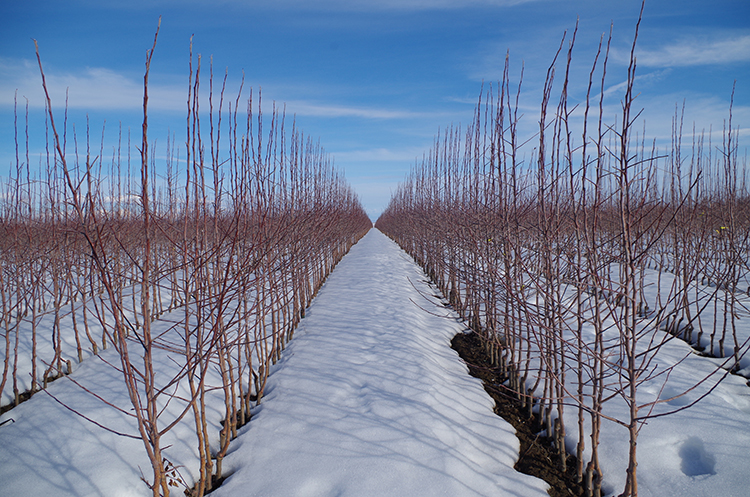 I met with Brian Nobbs and his wife Shirley from Mike and Brian’s Nursery, as baby trees are his business. I see now how grafting different varieties to certain rootstocks is more than a growing advantage, it’s an unequivocal must.
I met with Brian Nobbs and his wife Shirley from Mike and Brian’s Nursery, as baby trees are his business. I see now how grafting different varieties to certain rootstocks is more than a growing advantage, it’s an unequivocal must. 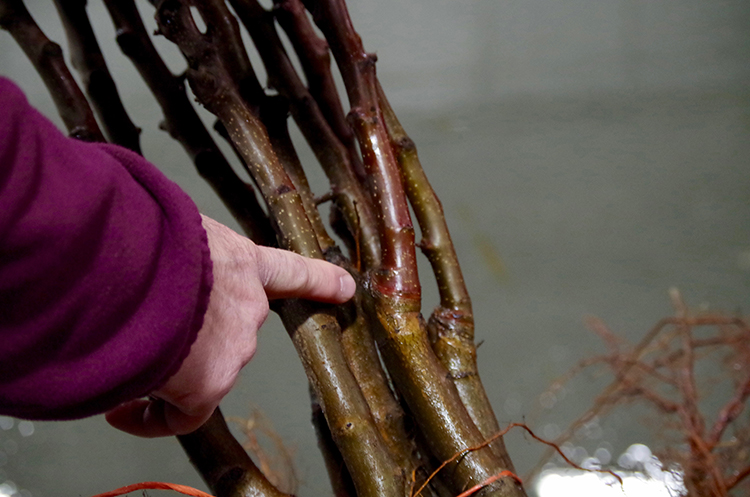
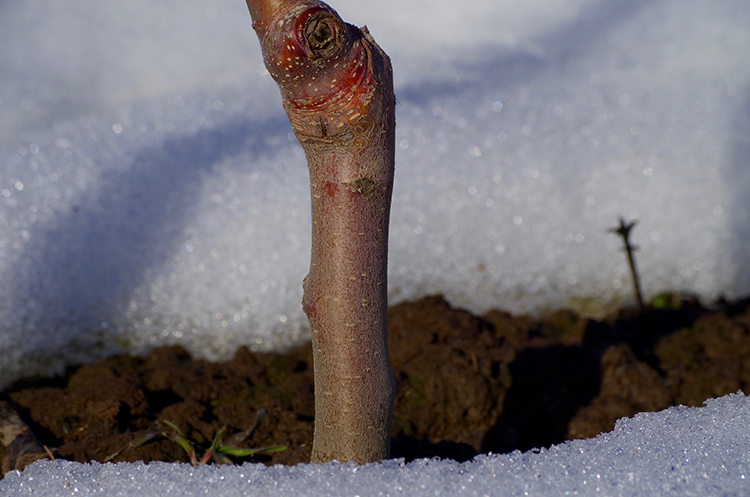 He takes me out to a field where the grafts are meant to grow up some, the tiny trees in tidy rows ready to come out of the ground and go into the warehouse. We stop there next and it is filled floor to ceiling with baby trees waiting for their final orchard destination. A two-year process, all are grafted to order on specific types of rootstock and stored in a 34 degree, 95-100% humidity space.
He takes me out to a field where the grafts are meant to grow up some, the tiny trees in tidy rows ready to come out of the ground and go into the warehouse. We stop there next and it is filled floor to ceiling with baby trees waiting for their final orchard destination. A two-year process, all are grafted to order on specific types of rootstock and stored in a 34 degree, 95-100% humidity space.
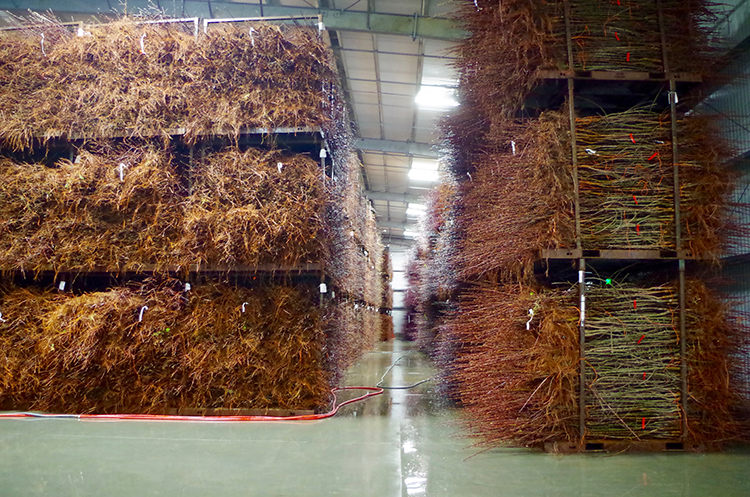
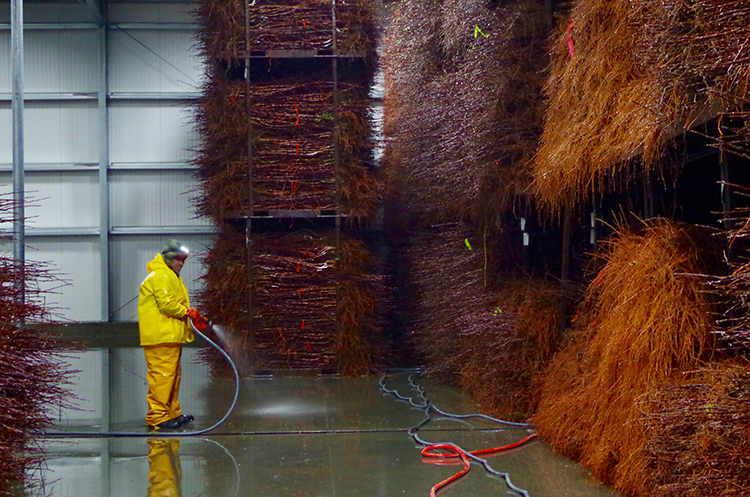 Such a long way from Johnny Appleseed. The inedible fruits of his seeded legacy did have a place in the American frontier. What is displeasing to bite into is often remarkable in the cider barrel and early Americans loved their cider. Not to mention with thousands of different apple trees out there cross pollinating with one another, the biodiversity of the gene pool was broadened considerably. One account that I read stated that about 14,000 distinct varieties were grown by Americans just a couple hundred years ago. But that, and where they went is a story for another time.
Such a long way from Johnny Appleseed. The inedible fruits of his seeded legacy did have a place in the American frontier. What is displeasing to bite into is often remarkable in the cider barrel and early Americans loved their cider. Not to mention with thousands of different apple trees out there cross pollinating with one another, the biodiversity of the gene pool was broadened considerably. One account that I read stated that about 14,000 distinct varieties were grown by Americans just a couple hundred years ago. But that, and where they went is a story for another time.
I had no idea the story of the apple was such a rich and complex tale.

